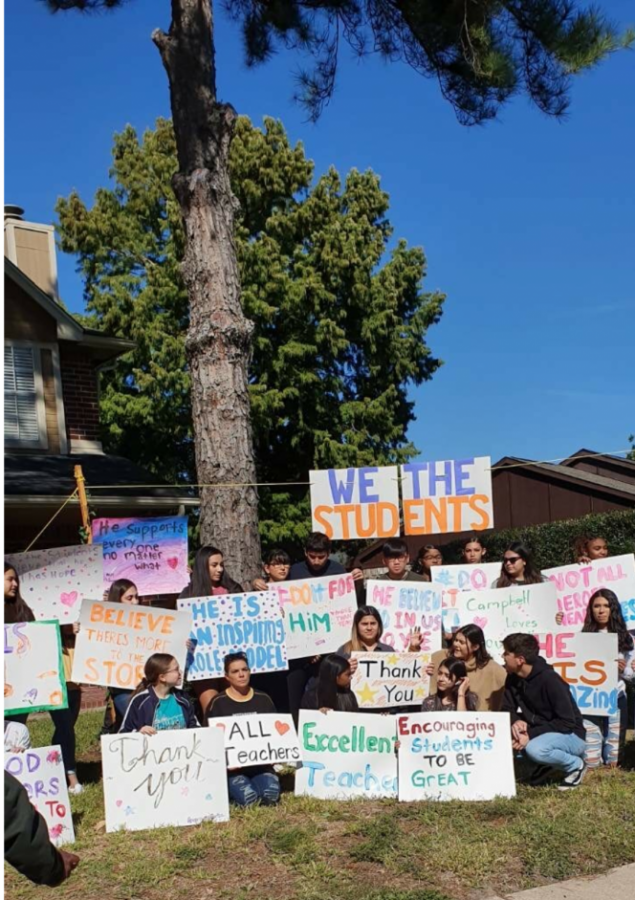Gender Inequality is Still Alive
Gender Inequality is real and is very much alive.
December 21, 2017
In many countries, boys are often valued more than girls. In India, sons are considered valuable, according to Huffington Posts’ “4 Reasons Why Indians Prefer Sons over Daughters” by Ramya Abhinand sons are preferred because of their economic support, while on the other hand, girls are seen as more expensive to take care of, and need more protection. However, females and males are both human, and can both benefit the economy as well as achieve the same goals.
Even though, in everyday situations, it may seem that boys and girls can do the same things. There are times in our American history where women had and still have to fight for their equality. In the workplace, women are underpaid and underestimated because of their appearance, and according to The Balance “Corporations sued for Gender Discrimination against Men and Women” by Lahel Wolfe. “On a note of contradiction, women are not only discriminated against for being “pretty” or “provocative” they are also discriminated against for being not pretty enough, too old…”
According to the Marie Claire article “14 Ways Women Still Aren’t Equal to Men” by Megan Friedman, the pay gap is narrowing, but women in the US working fulltime and part-time still only make on average 84 percent of what men make. According to Friedman, women need to work an extra 40 days a year to make as much as men. If women are qualified to work in the same field as a man, why aren’t they given the same opportunity? We proved that we women are qualified to do anything a man can during World War I when women worked in factories for the men, they earned their share of money and took the responsibility of keeping a job while the men were away.
Women were given the same rights as everyone to aspire to be anything they want to be, In the U.S. government, the number of women that run for government positions is small, according to an NPR article, “Why Aren’t There More Women In Politics?” by Danielle Kurtzleben. Kurtzleben points to an American University report that shows that women are more likely than men to think that they aren’t qualified for a government position. Recently, the number female representatives have grown but not enough to break the standards. In the article, “Despite gains, women remain underrepresented among U.S. political and business leaders” by Anna Brown, published by Pew Research Center, in 2017, 21 women serve in the U.S. Senate and 83 serve in the House of Representatives, comprising 19.4 percent of Congress. While this share is nearly nine times higher than it was in 1965, it remains well below the 51.4 percent of women in the overall U.S. adult population. Ladies, we are slowly but surely gaining power; we are almost there.
The cry for gender equality was widely shown on January 21, the day after the inauguration of the president was elected. In Washington, women came together to join arms as one to say “We aren’t going anywhere.” The New York Times article Women’s March Highlights as Huge Crowds Protest Trump “We’re Not Going Away” by Anemona Hartocollis and Yamiche Alcindor. Women were joined by large crowds across the country: In Chicago, the size of a rally so quickly outgrew early estimates that the march that was to follow was canceled for safety. In Manhattan, Fifth Avenue became a river of pink hats, while in downtown Los Angeles, even before the gathering crowd stretched itself out to march, it was more than a quarter mile deep on several streets. When people are able to come together as one, to represent a problem shows that people are aware of the problem, and are willing to help make a change.
The gender teaching starts early at home. Boys and girls are raised differently at home and are told how they should view each other in the real world. Boys are told as children that men have to be strong, protect themselves at all time, and since they are men they should not show any emotion towards anything or anyone. While, girls, on the other hand, are taught to play nice, should know how to cook for a man, learn to care for her family, and to stay pure until marriage. Gender inequality starts early, in the place where you feel safe; home.
In today’s society, there are still many issues that Americans and people around the world face. People are discriminated against in their own country and many are denied rights. It is our job as a generation with a voice to help change the gender inequality between men and women. This may be “a man’s world” but women are apart of it, and people need to realize that women are just as important as men.
According to the Money CNN article “It’s getting even harder to be a woman” written by Alanna Petroff, the report which examines gender imbalances in economics and the workplace, education, politics, and health found that years of global gains made by women are beginning to erode. This shows that citizens worldwide, have very little progress in stopping gender inequality. If the world doesn’t change their views on women, we will have generation after generation that continues to disrespect women, her abilities, and no one would accept the idea of becoming great in her life.
“This is a man’s world, this a man’s world. But it wouldn’t, it would be nothing. Nothing without a woman or a girl.” sings James Brown in his song “It’s a Man’s Man’s Man’s World.”
As a society, to make a huge difference in the future, change starts now. Groups from all over the world need to come together to show how beautiful, strong, and successful women are. Ladies should be handled with care, treated as queens, and loved like a brother. This is the only way today’s society will gain respect for women and girls around the world.



























